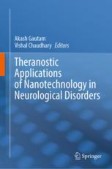Search
Search Results
-
CD90 is regulated by notch1 and hallmarks a more aggressive intrahepatic cholangiocarcinoma phenotype
BackgroundIntrahepatic Cholangiocarcinoma (iCCA) is characterized by a strong stromal reaction playing a role in tumor progression. Thymus cell...

-
Neurodegenerative Disorders
This chapter deals with the most common neurodegenerative diseases: Alzheimer’s disease, Parkinson’s disease, Huntington’s disease (HD), amyotrophic...
-
Introduction to Alzheimer’s Disease
Alzheimer’s disease (AD) is a progressive neurodegenerative ailment associated with intracellular amyloid aggregates and extracellular...
-
Dynamic Docking Using Multicanonical Molecular Dynamics: Simulating Complex Formation at the Atomistic Level
Multicanonical molecular dynamics (McMD)-based dynamic docking has been applied to predict the native binding configurations for several protein...
-
Notch activation suppresses endothelial cell migration and sprouting via miR-223-3p targeting Fbxw7
Angiogenesis involves temporo-spatially coordinated endothelial cell (EC) proliferation, differentiation, migration, and sprouting. Notch signaling...

-
Pathophysiology and Management Approaches in Alzheimer’s Disease
Alzheimer’s disease is recognized as a progressive multifarious neurodegenerative disorder that is pathologically characterized by the deposition of...
-
Identification of potential marine bioactive compounds from brown seaweeds towards BACE1 inhibitors: molecular docking and molecular dynamics simulations approach
The drug target protein β-secretase 1 (BACE1) is one of the promising targets in the design of the drugs to control Alzheimer’s disease (AD)....

-
Dysfunctional γ-Secretase in Familial Alzheimer’s Disease
Genetics strongly implicate the amyloid β-peptide (Aβ) in the pathogenesis of Alzheimer’s disease. Dominant missense mutation in the presenilins and...

-
Design of Therapeutic Nanomaterials for Amelioration of Alzheimer’s Disease
Alzheimer’s disease is the most common form of progressive late-onset dementia. The prevalence of multidimensional adversity of Alzheimer’s disease...
-
Aluminum-Induced AD-Like Pathological Features
Alzheimer’s disease (AD) is the most prevalent neurodegenerative disease characterized by neural aberrations in regions associated with higher...
-
NOTCH1-Induced T-Cell Acute Lymphoblastic Leukemia In Vivo Models
T-cell acute lymphoblastic leukemia (T-ALL) is primarily a NOTCH1-driven disease, which represents approximately 15% of pediatric and 25% of adult...
-
Elucidating the Molecular Mechanisms Involved in Regulating Alzheimer’s Disease by Capsaicin
More than 40 million people worldwide are presently afflicted by Alzheimer’s disease (AD), a neurodegenerative condition that is expected to spread...
-
Presenilin 1 phosphorylation regulates amyloid-β degradation by microglia
Amyloid-β peptide (Aβ) accumulation in the brain is a hallmark of Alzheimer’s Disease. An important mechanism of Aβ clearance in the brain is uptake...

-
Regulation of Ryanodine Receptor-Dependent Neurotransmitter Release by AIP, Calstabins, and Presenilins
Ryanodine receptors (RyRs) are Ca2+ release channels located in the endoplasmic reticulum membrane. Presynaptic RyRs play important roles in...
-
Dual-Specificity Phosphatase 15 (DUSP15) Modulates Notch Signaling by Enhancing the Stability of Notch Protein
Dual-specificity phosphatases (DUSPs) comprise a unique group of enzymes that dephosphorylate signaling proteins at both phospho-serine/threonine and...

-
Rotenone Induces a Neuropathological Phenotype in Cholinergic-like Neurons Resembling Parkinson’s Disease Dementia (PDD)
Parkinson’s disease with dementia (PDD) is a neurological disorder that clinically and neuropathologically overlaps with Parkinson’s disease (PD) and...

-
Loss of Numb promotes hepatic progenitor expansion and intrahepatic cholangiocarcinoma by enhancing Notch signaling
Numb, a stem cell fate determinant, acts as a tumor suppressor and is closely related to a wide variety of malignancies. Intrahepatic...

-
The aldehyde dehydrogenase 2 rs671 variant enhances amyloid β pathology
In the ALDH2 rs671 variant, a guanine changes to an adenine, resulting in a dramatic decrease in the catalytic activity of the enzyme....

-
Aβ profiles generated by Alzheimer’s disease causing PSEN1 variants determine the pathogenicity of the mutation and predict age at disease onset
Familial Alzheimer’s disease (FAD), caused by mutations in Presenilin (PSEN1/2) and Amyloid Precursor Protein (APP ) genes, is associated with an...

-
Specifying Neuronal Cell Identities in the Central Nervous System: A Complex Tale of Proneural Gene Regulation
The brain is characterized by an astounding diversity of neuronal phenotypes. In the last few decades, great strides have been made toward...
